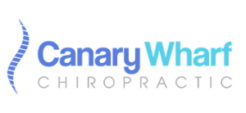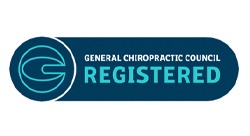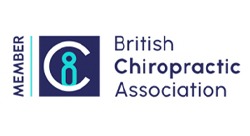Treatment Available To You
These techniques, outlined below, are usually used in combination with the aim being to maximise the amount of progress you make after each session.
Treatment Advice
Once you are happy to proceed you will be asked to give your written consent to treatment, which can be carried out there and then. The whole process from start to finish takes up to one hour.
How many sessions of treatment you will need will depend on what the problem is, how bad it is, how long you have had it and how much improvement you want to achieve.
A session or two might be enough to make a big enough difference to you, although this may only provide a short-term fix. Three or four sessions usually provides a better solution in very straightforward cases, but you could find that 10 to 12 sessions is recommended if the problem is predicted to be stubborn to alleviate.
But you could say, on average for our clients, five or six sessions are usually carried out. However, how many sessions you actually have is always up to you! You can stop treatment whenever you like and you will never be asked to commit to a minimum number. All we will do is make recommendations.
Please know that we will be upfront with you if we are unable to help and you will be referred to the appropriate health professional such as your GP or a specialist.
Although such referrals are uncommon we are always on the lookout for problems that we cannot treat. Chiropractors are trained to recognise the signs and symptoms of such problems and no case is ever assumed to be straightforward until it is concluded otherwise.
All details of your first and subsequent visits will be kept as part of your clinical notes. These are strictly confidential and nobody will be allowed to see your records without your permission but you will always be entitled to copies.
Spinal manipulation is a very effective way of treating back pain and neck pain and improving how your spine moves if it is stiff or immobile. Each manipulation is also known as a spinal adjustment or, simply, an adjustment and it often results in an immediately noticeable improvement.
It is a treatment very commonly associated with chiropractors. Your chiropractor will use his hands to apply a quick movement to your spine in a specific way in order to remove joint restrictions and improve the range of movement. You may feel and hear some popping or clicking when that happens, which is normal.
Spinal mobilisation gradually eases movement back into a stiff area of your spine to help relieve discomfort and tension of the surrounding muscles. It is a similar technique to spinal manipulation and is sometimes used in conjunction with it. Both techniques have the same essential aim of making your spine move better. However, you may prefer spinal mobilisation as a treatment option and, sometimes, it is a better option when pain is severe.
The techniques used in spinal manipulation and mobilisation, that make your spine move better and relieve discomfort, can also be applied to any joint of your body. These techniques are very effective at helping joints, such as the shoulders, elbows, hips and knees, move better and feel less stiff and restricted.
Trigger points, correctly known as myofascial trigger points, are hyperirritable knots in muscles. They are a palpable and painful spot that cause local pain and can also cause pain to be referred to other parts of your body. For instance, a knot in a muscle in your neck and shoulder region can cause pain to be felt in your arm, or even result in headaches. It is important to assess the presence of trigger points and treat them appropriately. Trigger points can be effectively treated with the application of firm pressure, deep tissue massage, acupuncture or stretching techniques.
Acupuncture can be used to treat painful conditions, such as neck pain and back pain, on its own or in conjunction with other treatments. At Canary Wharf Chiropractic we use acupuncture in a way that is more in step with a Western medical approach and it sometimes referred to as ‘dry needling’. Very fine needles are inserted at certain points on the body, which stimulate nerves under the skin, and in muscle tissue causing pain-relieving substances, such as endorphins, to be produced. The primary aim of this type of acupuncture is to alleviate pain and kick-start a healing response.
Making you feel better is half the battle. Keeping you that way is the other half. If you return to the cause of your problem, which is so often sitting at a desk, it is likely the problem will return sooner rather than later. But by doing regular exercises that stretch tight areas and strengthen any weakness a more enduring solution to your problem can be achieved. At Canary Wharf Chiropractic we will always give you the right advice you need to stay better. Rehabilitation exercises can range from being very simple and quick to do to being very in-depth and challenging. What you are given will depend on what your problem is, your level of fitness and your aims.
This new taping technique uses an elastic adhesive tape that supports joints and muscles without restricting range of motion, unlike conventional rigid tape. It can be worn for several days at a time and is resilient to getting wet in the shower and sporting conditions. Its popularity has grown considerably over recent years and the bright blue and pink tape is often noticeable on elite sports people on television. However, for more ‘normal’ patients in a clinical setting it can help, for example, a bad back recover more quickly by providing comfort and support.
So often the underlying cause of a problem is bad posture. Sitting at a desk all day, driving a car, standing or sitting on a train, sleeping in the wrong position and looking at a smartphone for too long with your head in the wrong position are all problems that are easy to relate to. It is easy to understand why so many people suffer neck pain and back pain as a result. Although it is not practical to cut out these activities altogether it is possible to lessen the negative impact they have on your body by improving posture through standing or sitting better. Your posture can be compared to the ideal and areas to improve on can be pointed out. Having a better posture will mean fewer problems.
By using a special table that we have at Canary Wharf Chiropractic our chiropractors are able to utilise this technique that can be used as an alternative to or in conjunction with regular manipulation of mobilisation. Some people find it is a lighter method of adjusting a joint or part of the spine yet is effective at improving mobility and relieving symptoms. It is especially helpful in making a hip joints and sacroiliac joints move better.
These techniques, outlined below, are usually used in combination with the aim being to maximise the amount of progress you make after each session.
Treatment Advice
At all times during your treatment with us you will always be given the best advice possible so that you can help yourself get better quickly and then stay that way. Advice will cover everything from the exercises you should be doing, to whether it is better to use hot or cold therapy, and also the things you should avoid so that progress is not hindered.
You will of course be able to ask questions about what is involved and you will be able to choose the type of treatment that is carried out.
Once you are happy to proceed you will be asked to give your written consent to treatment, which can be carried out there and then. The whole process from start to finish takes up to one hour.
How many sessions of treatment you will need will depend on what the problem is, how bad it is, how long you have had it and how much improvement you want to achieve.
A session or two might be enough to make a big enough difference to you, although this may only provide a short-term fix. Three or four sessions usually provides a better solution in very straightforward cases, but you could find that 10 to 12 sessions is recommended if the problem is predicted to be stubborn to alleviate.
But you could say, on average for our clients, five or six sessions are usually carried out. However, how many sessions you actually have is always up to you! You can stop treatment whenever you like and you will never be asked to commit to a minimum number. All we will do is make recommendations.
Please know that we will be upfront with you if we are unable to help and you will be referred to the appropriate health professional such as your GP or a specialist.
Although such referrals are uncommon we are always on the lookout for problems that we cannot treat. Chiropractors are trained to recognise the signs and symptoms of such problems and no case is ever assumed to be straightforward until it is concluded otherwise.
All details of your first and subsequent visits will be kept as part of your clinical notes. These are strictly confidential and nobody will be allowed to see your records without your permission but you will always be entitled to copies.
Spinal manipulation is a very effective way of treating back pain and neck pain and improving how your spine moves if it is stiff or immobile. Each manipulation is also known as a spinal adjustment or, simply, an adjustment and it often results in an immediately noticeable improvement.
It is a treatment very commonly associated with chiropractors. Your chiropractor will use his hands to apply a quick movement to your spine in a specific way in order to remove joint restrictions and improve the range of movement. You may feel and hear some popping or clicking when that happens, which is normal.
Spinal mobilisation gradually eases movement back into a stiff area of your spine to help relieve discomfort and tension of the surrounding muscles. It is a similar technique to spinal manipulation and is sometimes used in conjunction with it. Both techniques have the same essential aim of making your spine move better. However, you may prefer spinal mobilisation as a treatment option and, sometimes, it is a better option when pain is severe.
The techniques used in spinal manipulation and mobilisation, that make your spine move better and relieve discomfort, can also be applied to any joint of your body. These techniques are very effective at helping joints, such as the shoulders, elbows, hips and knees, move better and feel less stiff and restricted.
Trigger points, correctly known as myofascial trigger points, are hyperirritable knots in muscles. They are a palpable and painful spot that cause local pain and can also cause pain to be referred to other parts of your body. For instance, a knot in a muscle in your neck and shoulder region can cause pain to be felt in your arm, or even result in headaches. It is important to assess the presence of trigger points and treat them appropriately. Trigger points can be effectively treated with the application of firm pressure, deep tissue massage, acupuncture or stretching techniques.
Acupuncture can be used to treat painful conditions, such as neck pain and back pain, on its own or in conjunction with other treatments. At Canary Wharf Chiropractic we use acupuncture in a way that is more in step with a Western medical approach and it sometimes referred to as ‘dry needling’. Very fine needles are inserted at certain points on the body, which stimulate nerves under the skin, and in muscle tissue causing pain-relieving substances, such as endorphins, to be produced. The primary aim of this type of acupuncture is to alleviate pain and kick-start a healing response.
Making you feel better is half the battle. Keeping you that way is the other half. If you return to the cause of your problem, which is so often sitting at a desk, it is likely the problem will return sooner rather than later. But by doing regular exercises that stretch tight areas and strengthen any weakness a more enduring solution to your problem can be achieved. At Canary Wharf Chiropractic we will always give you the right advice you need to stay better. Rehabilitation exercises can range from being very simple and quick to do to being very in-depth and challenging. What you are given will depend on what your problem is, your level of fitness and your aims.
This new taping technique uses an elastic adhesive tape that supports joints and muscles without restricting range of motion, unlike conventional rigid tape. It can be worn for several days at a time and is resilient to getting wet in the shower and sporting conditions. Its popularity has grown considerably over recent years and the bright blue and pink tape is often noticeable on elite sports people on television. However, for more ‘normal’ patients in a clinical setting it can help, for example, a bad back recover more quickly by providing comfort and support.
So often the underlying cause of a problem is bad posture. Sitting at a desk all day, driving a car, standing or sitting on a train, sleeping in the wrong position and looking at a smartphone for too long with your head in the wrong position are all problems that are easy to relate to. It is easy to understand why so many people suffer neck pain and back pain as a result. Although it is not practical to cut out these activities altogether it is possible to lessen the negative impact they have on your body by improving posture through standing or sitting better. Your posture can be compared to the ideal and areas to improve on can be pointed out. Having a better posture will mean fewer problems.
By using a special table that we have at Canary Wharf Chiropractic our chiropractors are able to utilise this technique that can be used as an alternative to or in conjunction with regular manipulation of mobilisation. Some people find it is a lighter method of adjusting a joint or part of the spine yet is effective at improving mobility and relieving symptoms. It is especially helpful in making a hip joints and sacroiliac joints move better.


